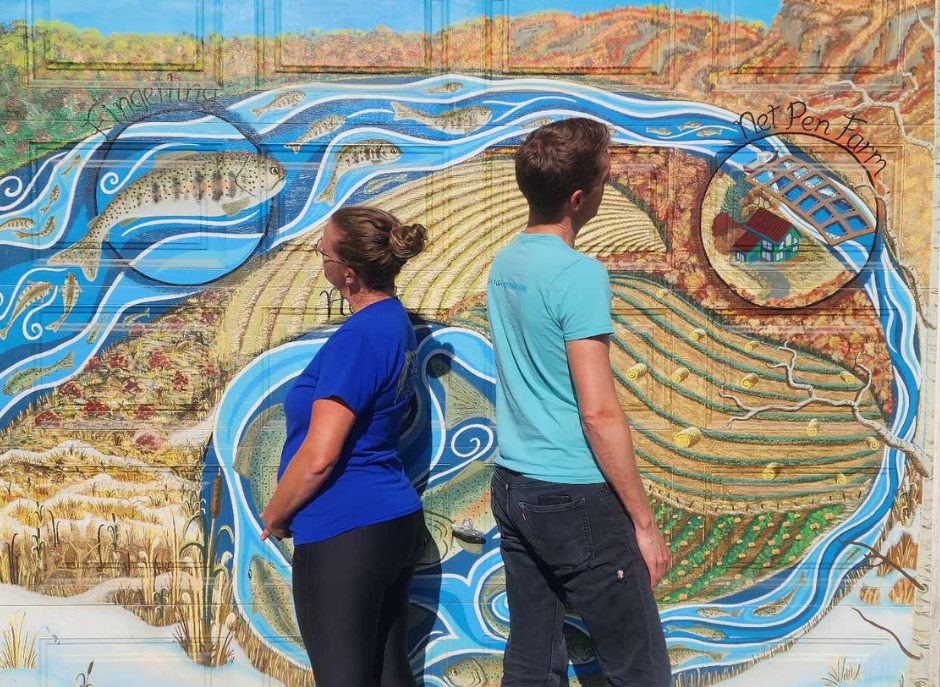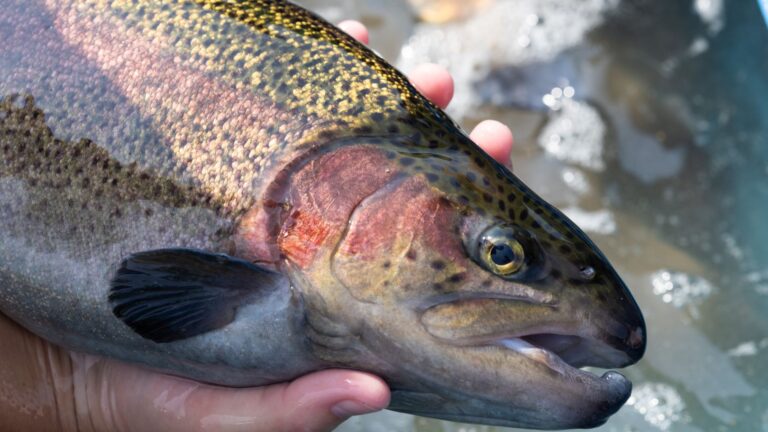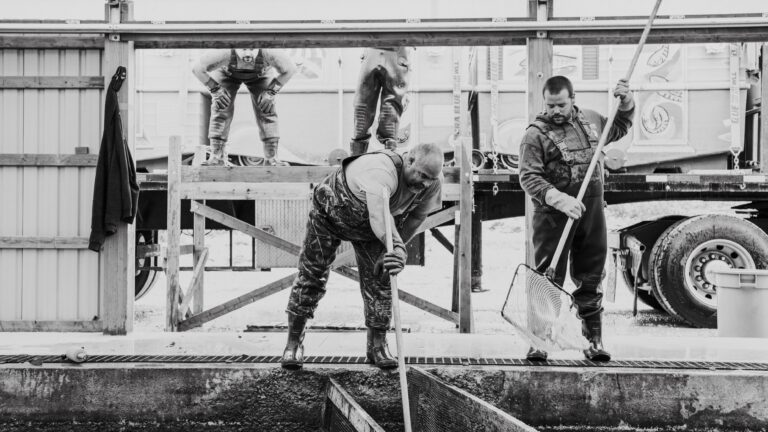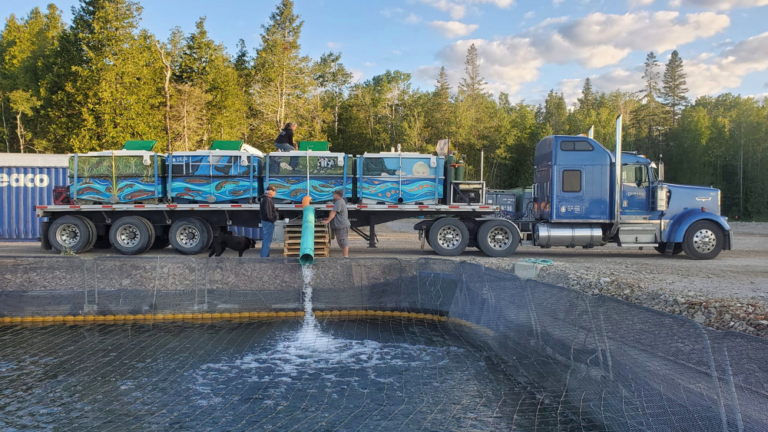
When the topic of fish farming comes up with your friends, do you ever find they’re quick to say what types of farms are good and what types are bad ?
We try and discourage this, because we don’t find that knowing the type of farm tells you much about its sustainability or farming practices. Instead, we look to understand WHO is doing the farming.
At Springhills, we are an oddity as fish farmers because we raise fish using three different types of farms:
- Flow-through, where we borrow water from springs or a spring-fed river for about 20 minutes, and then return it to the nearby river.
- Net-pens, which float in the lake and raise fish out in the crystal-clear fast currents.
- Recirculating aquaculture systems, which use waste-water treatment technology to keep recycling the water again and again in a closed loop.
Raising fish all of these ways gives us some perspective, which is why we don’t advocate for one type over the other.
There are examples of good flow-through farms, and examples of bad ones. Just like there are good net-pen farms, and not-so-good farms. And good recirculating farms, and others not.
Flow-through farms are good for small batches of fish because you’re limited on how much water you have. They’re good for juveniles and niche species, like Arctic char. But you have to ensure you’re keeping tanks clean and remove waste daily.
Net pen farms are probably the lowest carbon footprint of any animal protein because you’re not moving or oxygenating any water. In some cases (like Ontario) the nutrients they add are good because they increase populations of wild fish. But net pens elsewhere can be linked to some poor environmental impacts.
Recirculating farms can limit water use, but they have very high carbon footprint because of all the energy-intensive equipment. We use this type of raising juveniles because we can control a lot more factors (like temperature). But the technology is still shaky for full grown fish.
This is why we always come back to eco-certifications like Best Aquaculture Practices. They have very rigid standards for environmental impacts, fish welfare and food safety (much stricter than government regulations) and we’re audited on them every year.
And we know that responsibly caring for your fish also makes it taste better in the end!
So don’t get in a ROE next time somebody jumps to conclusions, just encourage them to CAST a line to a different way of thinking about fish farms!


